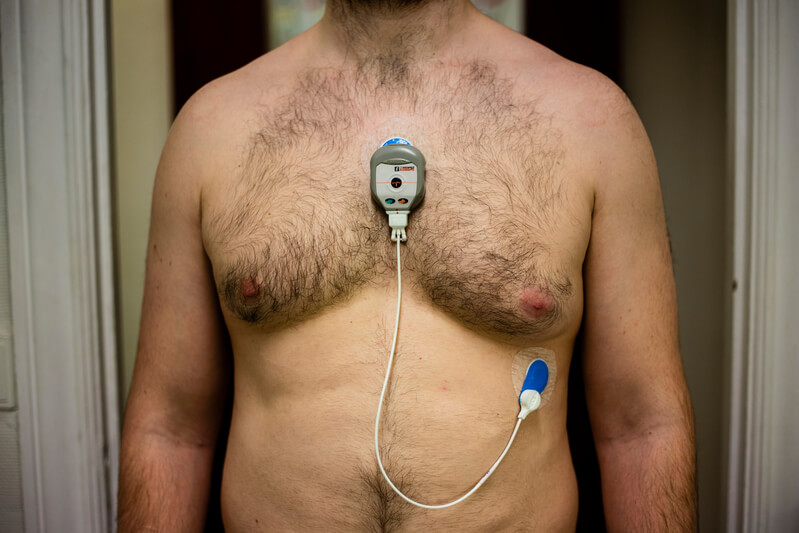
A cardiac event monitor, also known as an event recorder, is a painless way to record your heartbeat on the go, away from the doctor’s office. It record’s your heart’s electrical activity when you have symptoms.
The information is transmitted directly to your healthcare provider so they can actively analyze your heart while you are having symptoms.
A group of cells in the sinoatrial (SA) node in the right atrium, which is in the upper chamber of your heart, begin the electrical signal to start your heartbeat. That signal travels through your heart’s conducting system to the ventricles; the heart's two lower chambers. As this electrical signal travels, nearby parts of the heart contract.
An ECG and event monitors analyze this electrical signal in your heart. These tests are excellent for diagnosing various abnormal heart rhythms and medical conditions.
An ECG only gives a snapshot view of how your heart functions, whereas an event monitor starts recording when you activate it and continues to provide a picture of how your heart is working till it is turned off. The event monitor can record data throughout your routine activities.
An event monitor is a small limited-function electrocardiogram (ECG) you wear that records your heartbeat. The primary purpose of an event monitor is to record irregular heartbeats, which can be hard to pick up during your appointment.
There are two different types of event monitors, a non-looping recorder and a memory-loop recorder.
A non-looping recorder is also called a symptom event monitor. It looks like a small card and can be carried in your pants pocket or purse.
When you experience irregular heartbeat symptoms, you take it out, put it over your heart, and press a button. This will record your heartbeat. It records your heartbeat for a few minutes when it is activated.
This recorder is worn at all times for several weeks. It is constantly recording your heartbeat. If you experience symptoms of an irregular heartbeat, just push the button on the device.
A memory-loop recorder is always running. When you press the button on the device, it stores the data for a few minutes before, during, and after you experience symptoms. This gives a complete picture of what is happening with your heart when you experience symptoms.
Generally, you carry or wear the recorder for two to four weeks, depending on your symptoms.
An event monitor is entirely safe to use. The sticky patches that attach the sensors to your chest can irritate the skin, but the monitor itself is painless.
Dr. Liliah Ahiable will show you how to use the specific event monitor she assigns you. There are different event monitors, so she will show you how to use the one you are given.
If Dr. Ahiable suspects you have an abnormal heart rhythm based on analyzing your medical history, she may suggest you use an event monitor to track your heart rhythm.
Abnormal and irregular heartbeats don’t happen all the time and can be hard to pick up with a traditional ECG. A cardiac event monitor is often a better way to record your heart’s electrical activity when experiencing symptoms of an irregular heart rhythm.
An event monitor can help determine if you have an abnormal heart rhythm and what type of abnormal rhythm you have. For example, your heartbeat could be abnormally slow, fast, or irregular.
If you think you have an irregular heartbeat, we can monitor your heart with a cardiac event monitor to get a clearer picture of what is happening with your heart.
Let the team at Sydnor Cardiovascular Center, led by Dr. Ahiable, take care of your heart health. To schedule an appointment, call 727-300-2282 or request an appointment online.